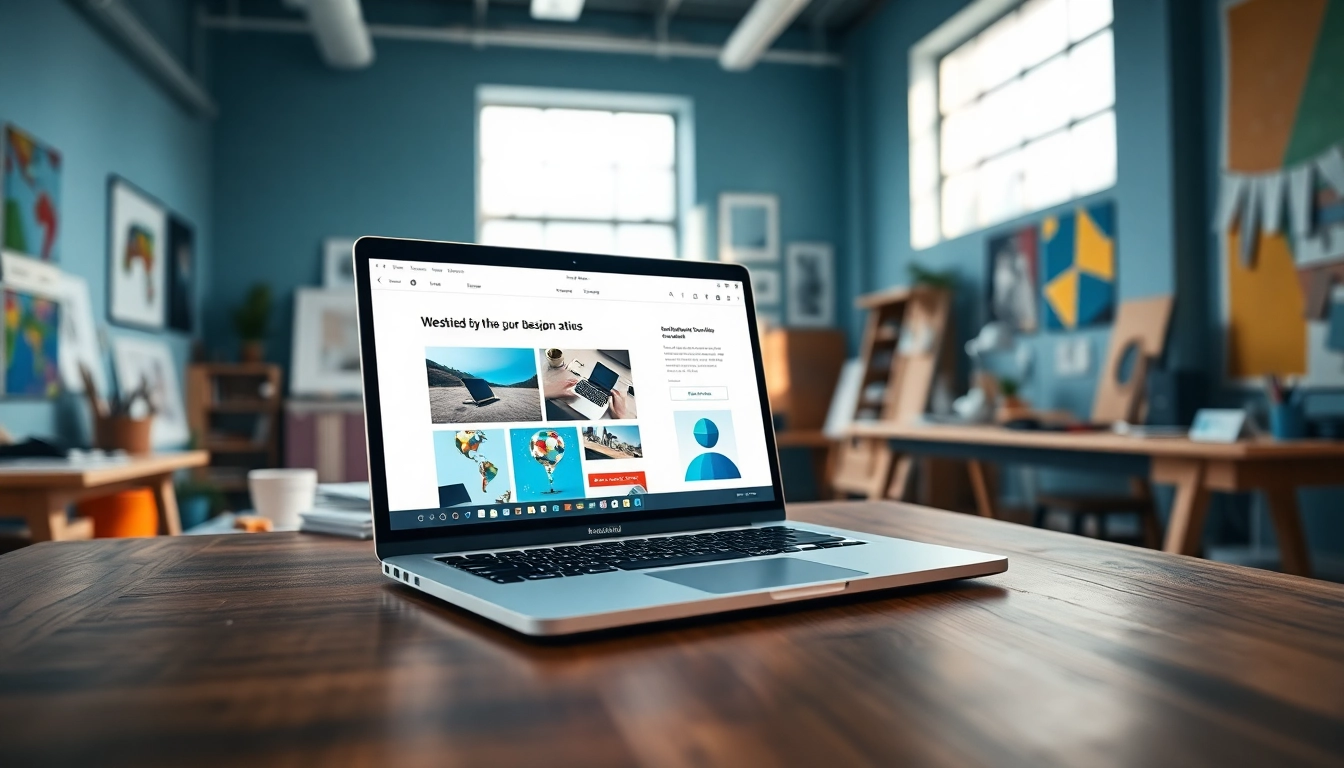Understanding the Basics of Website Design
Definition and Importance of Website Design
Website design is the process of creating the visual aesthetics and functionality of a website. It combines various aspects, including web graphic design, user interface (UI) design, and authoring, ensuring the site is visually appealing and easy to navigate. In today’s digital age, an effective website design serves as a cornerstone for businesses and individuals alike, impacting everything from user experience to SEO performance.
The importance of website design cannot be understated. It affects how users perceive your brand, motivates them to engage with your content, and ultimately influences their decision to take action, whether that’s making a purchase or signing up for a newsletter. A well-designed website can lead to improved conversion rates, better user satisfaction, and increased overall engagement. website design is not just about aesthetics; it’s about creating a meaningful user experience.
Key Elements of Effective Website Design
Several critical elements comprise effective website design. These include:
- Layout: The arrangement of visual elements on a page determines how users interact with the content.
- Color Scheme: Colors evoke emotions and play a crucial role in branding and user retention.
- Typography: Fonts should ensure readability and align with the website’s tone and message.
- Imagery: High-quality images enhance content appeal and can significantly impact user engagement.
- Navigation: An intuitive navigation system ensures users can find information quickly and easily.
Common Misconceptions About Website Design
There are many misconceptions surrounding website design that can hinder effective implementation. Here are a few:
- It’s All About the Aesthetics: While visuals are important, functionality and user experience are equally critical.
- More Features Mean a Better Website: Overcomplicating your site with unnecessary features can deter users. Simple, streamlined designs often perform better.
- Website Design is a One-time Task: A website should evolve based on user feedback, changing trends, and technological advancements.
Essential Tools for Website Design
Graphic Design Software for Website Design
Graphic design software is fundamental in creating visually appealing elements for your website. Some popular tools include:
- Adobe Photoshop: Ideal for editing and creating images, facilitating the design of web graphics.
- Adobe Illustrator: Perfect for creating vector graphics and logo designs.
- Canva: A user-friendly, web-based platform that offers customizable templates for non-designers.
Web Development Tools to Enhance Website Design
To go beyond static designs, developers need robust web development tools. These include:
- HTML/CSS: The foundational languages for web development, crucial for structuring and styling.
- JavaScript: Used for interactive elements and dynamic content.
- Content Management Systems (CMS) like WordPress: They simplify website management and provide a plethora of templates and plugins to optimize design and functionality.
Prototyping and Wireframing in Website Design
Prototyping and wireframing are essential steps in the design process, allowing for visualizing ideas before they come to life. Tools like:
- Figma: A collaborative interface design tool that allows for real-time feedback.
- Sketch: Known for digital design, it supports prototyping all in one application.
- InVision: Offers prototyping features that let you simulate how the finished website will look and function.
Best Practices in Website Design
Responsive Website Design Techniques
Responsive design ensures that a site functions effectively on devices of all sizes, from smartphones to desktops. Implementing fluid grids, flexible images, and CSS media queries help maintain a seamless experience across devices. It’s essential to prioritize mobile-first design approaches as mobile traffic grows.
Enhancing User Experience in Website Design
User experience (UX) is paramount in website design. To improve UX, consider the following best practices:
- Fast Load Times: Optimize images and minimize the use of heavy scripts to reduce loading times.
- Accessibility: Ensure your website is usable for individuals with disabilities by following WCAG guidelines.
- Consistent Design: Maintain a consistent style throughout the site to create a cohesive experience.
SEO Considerations for Website Design
Integrating SEO best practices into your website design can dramatically influence visibility and traffic. Focus on:
- Clean Code: Use semantic HTML to improve crawling by search engines.
- Meta Tags: Incorporate title tags and meta descriptions that accurately reflect the content of each page.
- Internal Linking Strategy: Use internal links to help users navigate your site and aid in SEO.
Trends in Modern Website Design
Minimalist Aesthetics in Website Design
Minimalism is gaining popularity in web design as it allows for a clean, clutter-free experience. This design style emphasizes essential features while eliminating unnecessary elements, leading to faster load times and improved user engagement.
Integrating AI in Website Design
Artificial Intelligence (AI) is transforming website design by allowing for automation in various processes. Tools such as chatbots enhance user interaction, while machine learning can analyze user behavior to suggest tailored experiences and content.
The Role of Animation and Interactivity in Website Design
Animation and interactivity can enhance user engagement and improve the overall experience. From subtle hover effects to dynamic transitions, these design elements can guide users through content and draw attention to call-to-action buttons.
Measuring Success in Website Design
Analytics Tools for Evaluating Website Design Performance
Analytics tools are essential for assessing the performance of your website design. Google Analytics, for example, offers insights into user behavior, traffic sources, and conversion rates, helping designers make data-backed improvements.
User Feedback and Testing for Website Design Optimization
User testing is an invaluable method for gathering direct feedback on design effectiveness. Conducting A/B testing allows you to compare different design elements to see which performs better, guiding iterative improvements for better results.
Future-Proofing Your Website Design Strategy
To future-proof your website design strategy, stay informed about emerging technologies and shifting user preferences. Regularly update your design based on analytics and user feedback to ensure continued relevance. Flexibility and adaptability will be key in navigating the fast-paced digital landscape.



